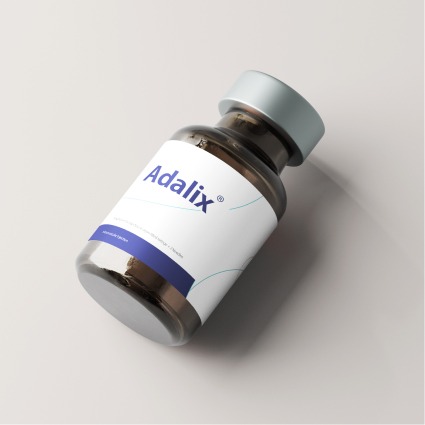The Adalimumab Era, Reimagined: Interchangeability, Real-World Outcomes, and Access in the Biosimilar Age
Adalimumab, a fully human monoclonal antibody targeting tumor necrosis factor-α (TNF-α), has transformed the management of immune-mediated inflammatory diseases across rheumatology, dermatology, gastroenterology, and ophthalmology. As its market exclusivity has waned, a diverse ecosystem of adalimumab biosimilars has emerged, accompanied by regulatory milestones, shifting payer policies, and a growing body of real-world evidence. This review synthesizes contemporary developments with emphasis on U.S. regulatory designations for interchangeability, formulary strategies driving uptake, and clinical consequences of nonmedical switching. We also discuss product-attribute considerations such as high-concentration citrate-free formulations and device design, as well as immunogenicity and therapeutic drug monitoring. Taken together, current data support the clinical equivalence of biosimilar adalimumab to the reference product while highlighting the practical levers—policy, education, and procurement—that determine whether patients translate scientific progress into timely, affordable care.
Introduction: Adalimumab as a Therapeutic Benchmark
Adalimumab (widely known as Humira) binds TNF-α with high affinity, preventing receptor interaction and suppressing inflammatory signaling. It is administered subcutaneously across multiple chronic diseases: rheumatoid arthritis, psoriatic arthritis, ankylosing spondylitis, plaque psoriasis, Crohn’s disease, ulcerative colitis, juvenile idiopathic arthritis, hidradenitis suppurativa, and noninfectious uveitis. Like all TNF inhibitors, it carries well-documented risks of infection and malignancy that necessitate careful screening and monitoring. Despite these risks, adalimumab has long been the reference standard against which biosimilars are evaluated, owing to its proven efficacy and expansive clinical dataset.
Regulatory Milestones: From Biosimilarity to Interchangeability
Biosimilars are evaluated on structural, functional, and clinical comparability to a reference biologic. In the United States, interchangeability is a distinct designation that allows a pharmacist to substitute a biosimilar for the originator without prescriber intervention. Several adalimumab biosimilars now carry this designation, spanning both high- and low-concentration formulations as well as syringe and autoinjector presentations. This transition from theoretical interchangeability to practical substitution represents a milestone in biologic regulation, lowering barriers at the point of care and setting a precedent for other biologic classes.
Payer Strategy and Market Access
Scientific equivalence does not guarantee adoption; payer and pharmacy benefit manager decisions largely dictate access. Over the past year, several major benefit managers removed the originator from preferred formulary status, favoring specific biosimilars instead. This shift has accelerated nonmedical switching and new initiations on biosimilars, demonstrating how market forces, not only clinical data, determine patterns of use. For patients, these formulary decisions can shape out-of-pocket costs and availability, underscoring the importance of aligning payer incentives with evidence-based medicine.
Real-World Evidence: Outcomes of Switching
The central question in biosimilar adoption is whether switching affects outcomes. Real-world studies from rheumatology, dermatology, and gastroenterology demonstrate that patients who transition from Humira to a biosimilar maintain disease control, persistence, and safety outcomes comparable to those who remain on the originator. Rates of successful transition are high, and cost reductions are substantial. A minority of patients return to the originator, often influenced by perception rather than objective treatment failure—a phenomenon consistent with the nocebo effect. These findings reinforce that biosimilar substitution is not only feasible but also effective at scale.
Product Attributes: Concentration, Citrate, and Device Design
While biosimilars and the originator share molecular equivalence, product attributes can influence patient experience. High-concentration citrate-free formulations reduce injection volume and are associated with less injection-site discomfort. Device preference also plays a role: autoinjectors offer convenience, while syringes allow more control over injection speed. For patients on lifelong therapy, such nuances can significantly affect adherence and satisfaction. Modern biosimilars now offer a wide range of these options, placing patient preference at the center of prescribing decisions.
Immunogenicity and Therapeutic Drug Monitoring
Switching between adalimumab products naturally raises questions about immunogenicity. Clinical trials and observational studies consistently demonstrate no increase in anti-drug antibodies or loss of efficacy after single or multiple switches. Therapeutic drug monitoring (TDM) has emerged as a valuable tool for identifying loss of response. Measuring trough concentrations and antibody status helps clinicians differentiate pharmacokinetic failure from mechanistic failure, guiding decisions on dose adjustment or switching drug class. This strategy applies equally to originators and biosimilars, reflecting their shared biological function.
Economics and Policy Implications
The introduction of adalimumab biosimilars has delivered significant savings to health systems that implement competitive procurement strategies.
In some countries, annual drug-spend reductions have reached hundreds of millions of dollars, freeing resources for innovation and expanding biologic access. In the United States, where formulary negotiations dominate, biosimilars offer a path to sustainable pricing, provided payer and manufacturer strategies prioritize competition over exclusivity. The broader lesson is clear: the value of biosimilars is not only clinical but also systemic, redefining how health systems allocate finite resources.
The Reference Product’s Enduring Role
Despite the rapid uptake of biosimilars, Humira retains significance as the originator molecule with the most extensive safety and efficacy record in its class. Its prescribing information remains the standard for screening and monitoring practices, and it serves as the comparator for biosimilar development. Far from being displaced, Humira now functions as the benchmark around which a competitive ecosystem evolves.
Practical Guidance for Clinicians
Prioritize disease control
Stable patients can be transitioned to biosimilars with confidence; new patients can start on formulary-preferred biosimilars.
Respect patient preference
Device choice and injection experience matter for adherence.
Use therapeutic drug monitoring.
TDM can clarify causes of nonresponse and guide adjustments.
Educate proactively
Address nocebo concerns with transparent communication about biosimilarity standards.
Steward system savings
Reinvest financial gains into expanding access for underserved populations.
Looking Ahead
The adalimumab landscape is no longer defined by a single molecule but by an ecosystem of biologics and biosimilars. Interchangeability has transformed substitution from a regulatory concept into a clinical reality. Payer strategies are realigning around cost-effectiveness, while real-world evidence provides reassurance of maintained outcomes. Patient-centered considerations—formulation, device, and education—are emerging as differentiators in practice.
Ultimately, the future of adalimumab therapy lies not in whether biosimilars can replicate the originator, but in how effectively health systems can leverage this competition to expand access, improve sustainability, and deliver care that is as affordable as it is effective.

